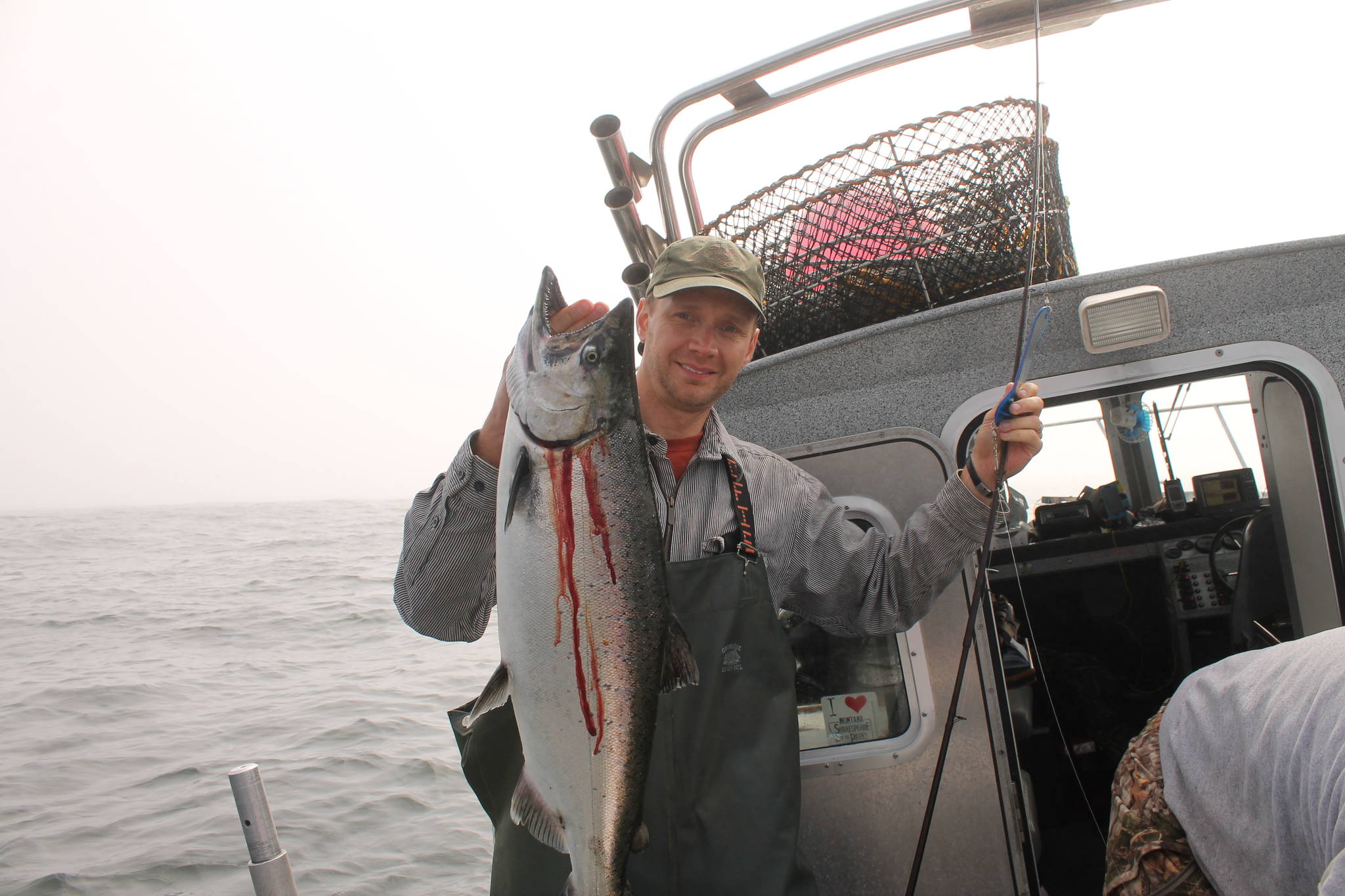I’ve never been in one of those phone booths with the $100 bills flying around, but summer time in Alaska feels a lot like it sometimes. Or at least seems enough like it to craft a metaphor.
Happy, spastic movements reaching for, but not really grasping, anything until it’s over. Then someone turns off the fan, takes away the bills and I’m directed down the hallway into winter.
One might think that June would be a great time to be an outdoor columnist because there is so much to do — fishing for kings and halibut with ocean rods, fishing for trout with a tiny fly rod, fishing for salmon with a larger fly rod, not to mention hiking, camping and bonfiring. The problem is, there’s too much.
Before I can focus and get my brain around one topic and go from there, something else floats around in my head, then something else.
If I do happen to get in front of my computer, it’s hard to get more than a couple lines down because a week’s worth of moments all demand attention. Do I write about using a big, grumpy sculpin pattern for big cutthroat trout with my fly rod, or catching a king salmon with my brother for the first time in about a decade thanks to his service in the Navy? What about losing a king next to the boat while my brother recorded video on my phone? I could write about any, but not really all, at least not in the same column.
By the time the deadline approaches, I’ve camped, taken a final prowl around the tidal flats shooting black bear with my Canon, chopped firewood, and hiked the new trail up one of my favorite mountains. So many more words for so many moments since that morning on the ocean with my big (but I’m taller) brother.
$100 bills. Flying around. Everywhere. Metaphorically speaking.
Do I write about the other side of documentation — images? Should I whine about losing my GoPro on the shore of the lake while catching those cutthroats? Or what about the countless times I haven’t adjusted the manual settings on my camera and rather than capturing a bear mid-stare, I get a totally black or totally white image because the shutter and aperture are totally wrong for the light? The bigger issue with photography is probably when I have the camera in my pack and I don’t even bother to get it out. The cellphone is so much easier, and though the quality of has improved, they are still a multi-tool and a device specializing in a specific function is often much better. A good camera is meant to take good photos, a cellphone can take good photos. There’s a difference.
iPhone or Canon choice aside, both only do a fair job of capturing the real beauty of being there in person, but there’s nothing wrong with filling device storage with memories and social media with posts. The modern archive is free and digital and super accessible. For what it’s worth, my brother still has a flip phone and it might be the same one from the last time we fished together.
Anyway, back to floating bills and my job.
It feels like such a cop-out to do the, “There’s so much to do in Alaska during the summer, it’s so wonderful and I’m so #blessed.” But it’s true and for someone like myself who has difficulty focusing, it can be a nightmare. But in a good way.
I suppose it’s a matter of discipline. The same discipline that requires me to be burdened with carrying a camera in my hand, requires me to come home from a daily adventure and punch it out in a Word document.
In the same way, if you like to be outside, you have to get outside because summer won’t slow down for any of us.
• Jeff Lund is a writer and teacher based in Ketchikan. This column appears in Outdoors twice a month.

